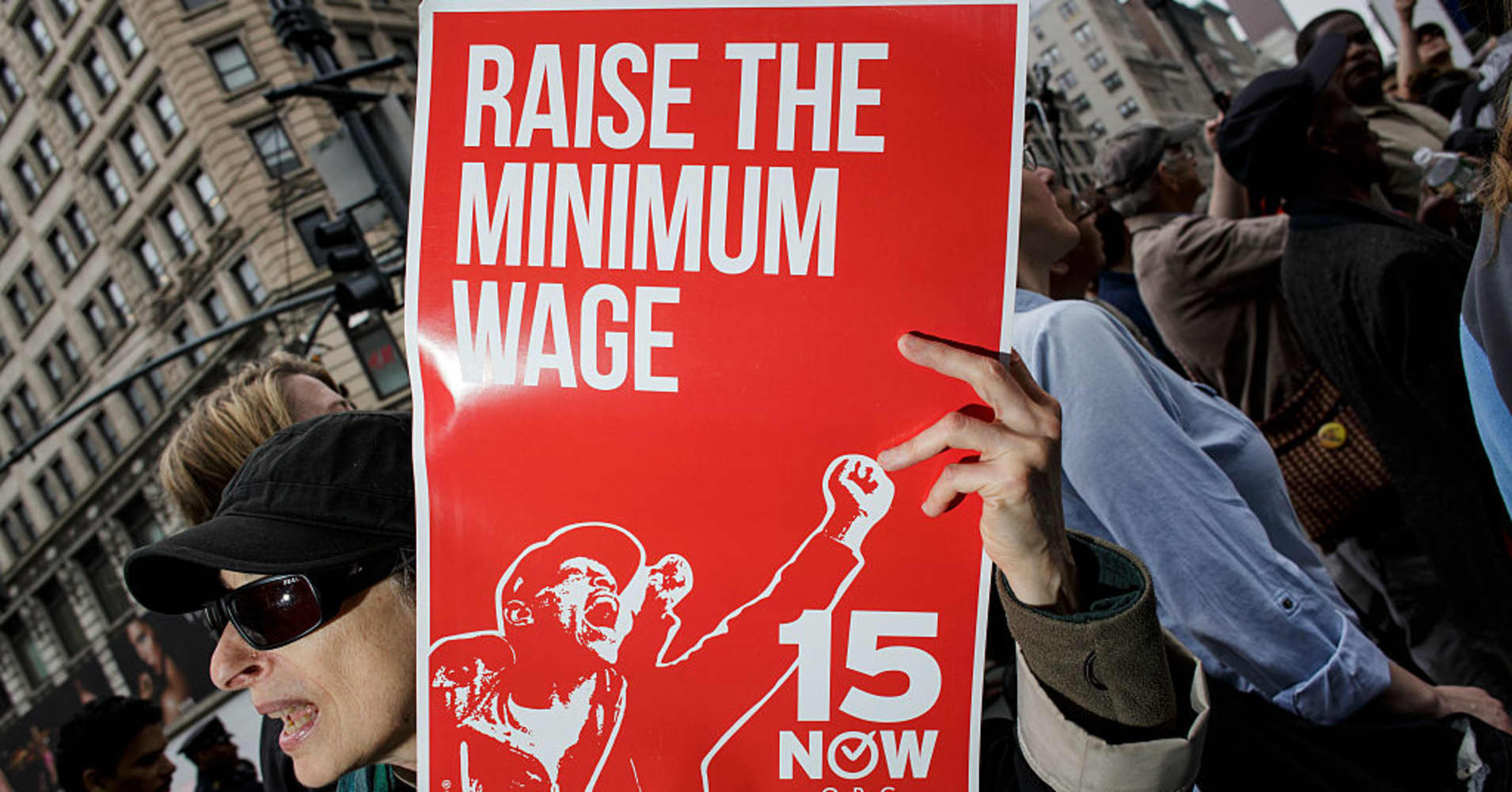
For the more than 6 million small businesses nationwide, employee turnover can be a brutal expense.
In fact, nearly 1 in 3 (32%) employees will no longer be at their current employer one year from now. For a team of 20, where each person earns $50,000, that turnover rate can cost a business more than $100,000 a year. That's why reducing turnover is essential for keeping costs down as it relates to hiring, onboarding and training employees.
In a recent analysis of why employees leave small businesses, the research team at payroll, HR and benefits company Gusto found a strong correlation between hourly wage thresholds and the rate of turnover.
According to the data from tens of thousands of small business employers who work with Gusto across the U.S., employees earning $7.25/hour (the current federal minimum wage) have a 70% chance of leaving within a year, more than double the average turnover rate of 32%.
This finding comes alongside the recent passage of the Raise the Wage Act in the U.S. House of Representatives. The bill proposes a gradual increase to the federal minimum wage from $7.25/hour to $15/hour by 2025. The Senate hasn't considered the bill at this point, yetnearly all 2020 Democratic presidential candidates support the legislation.
Gusto's data indicates that at $15/hour, turnover rates drop significantly from 70% (at the current federal minimum wage) down to 41%.
The economics of the minimum wage are complex.
Results from Seattle's minimum wage ordinance mirror Gusto's findings — employee turnover declined as a result of the city's minimum wage increase. This same research also found a significant reduction in hours worked by employees, suggesting that employees worked fewer hours because they could earn more in less time and by paying for fewer total hours worked employers could make up for the added costs.
But how much you pay an employee is not the only thing that contributes to turnover risk. As pay increases, the returns to each additional dollar diminish. Doubling an employee's hourly rate from $25/hour to $50/hour still reduces turnover, but by a smaller margin — from 31% to 24%.
Tenure and managerial responsibility become increasingly important as an employee's hourly wage rises.
Longer serving employees have significantly lower turnover. According to Gusto's data, 48% of employees hired at a small business today will no longer be there one year from now. This is much higher than the 32% turnover rate for an employee that has been on the job for three years.
This doesn't mean that employers should not invest in longer-tenured employees. Instead, they should recognize the importance of investing early in a positive employee onboarding experience to ensure new hires are set up for long-term success.
Study after study shows that job autonomy is one of the most important factors when it comes to turnover. Senior managers have an annual turnover rate of only 13% compared to 31% for middle managers. But employees without any direct reports are 44% likely to leave a small business within a year.
Promoting employees to be managers may not be feasible as a retention strategy, especially in a small business where management opportunities are often few. Instead of formal promotions, small business employers can consider granting more responsibility to lower-level employees — like managing a project without formally managing the project contributors.
Even if the Raise the Wage Act doesn't pass the Senate, many cities and states are considering raising their own minimum wages. Therefore, it is important for small businesses to stay on top of local legislation and find ways to prepare for potential minimum wage hikes now.
Retaining employees at small businesses is as much a science as it is an art. And small business owners should consider factors beyond just how much they pay their employees if they hope to keep their team for years to come.
—By Matthew Castillon, data scientist at Gusto, a software services company that handles payroll, benefits and HR for more than 100,000 small businesses
0 Comments